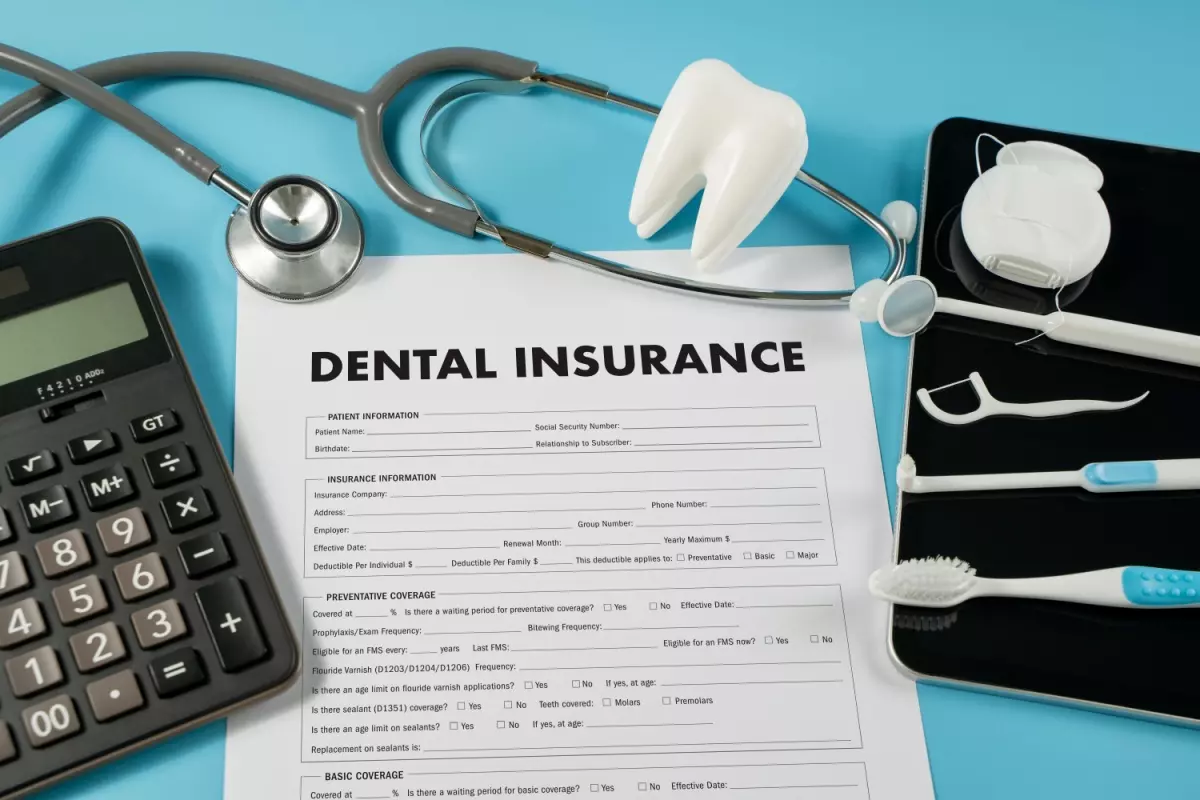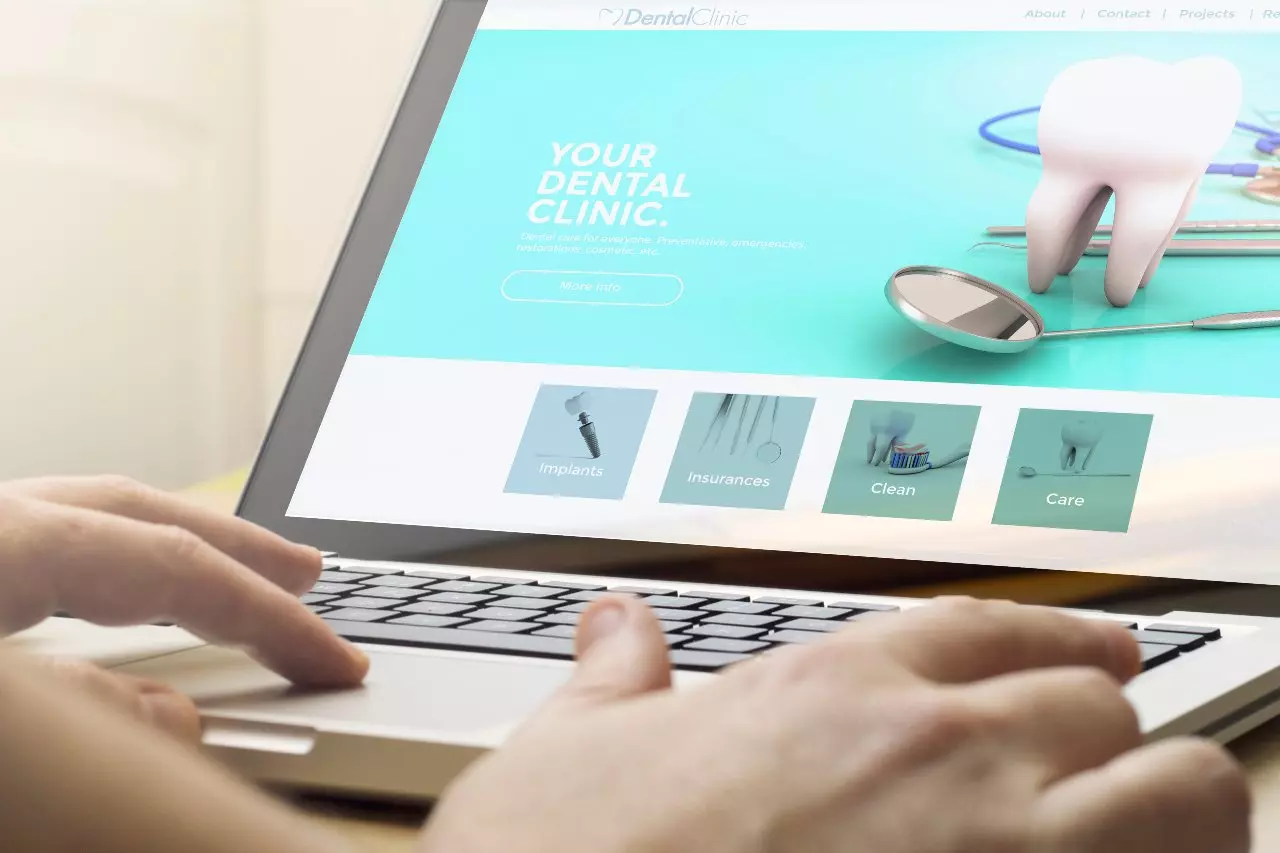Table of Contents
- Is Starting a Dental Business a Good Idea?
- Do You Have to Be a Dentist to Own a Dental Practice?
- Starting a Dental Business: Step-by-Step Guide
- Research the Dental Industry
- Obtain Licenses and Certifications
- Secure Financing
- Register Your Dental Business
- Meet Tax Obligations
- Get Insurance
- Decide What Dental Services You’ll Offer
- Purchase Necessary Dental Tools and Equipment
- Define Your Pricing Strategy
- Create a Professional Website
- Develop a Marketing Strategy
- Sum-Up
Did you know tooth enamel is the strongest substance in our bodies, surpassing even bones in durability? Yet, despite this impressive strength, teeth can’t heal themselves.
Just like teeth, dentists are irreplaceable, making the industry not just a noble profession but a thriving business arena. Starting your own dental practice gives you the opportunity to use your medical skills to meet the needs of the community, creating a positive impact on countless lives.

This guide is crafted for those in the dental profession looking to carve their path, from budding dentists fresh out of their residencies to seasoned professionals eager to establish their own clinics. We’ll walk you through the steps to launch, manage, and grow a successful dental practice.
Is Starting a Dental Business a Good Idea?
Starting a dental business is a great idea. First, the demand for dental professionals is on the rise, with an expected 8% growth in employment from 2022 to 2032. Second, the dental industry is not just growing; it’s thriving on a global scale.
With a projected Compound Annual Growth Rate (CAGR) of 4.5% from 2023 to 2030, the dental market is set to expand significantly. This growth is fueled by advancements in dental technologies, increased awareness about oral health, and greater access to dental care services.
Do You Have to Be a Dentist to Own a Dental Practice?
It depends largely on where you plan to open your clinic. In many places, the law requires that a dental practice be owned, or at least partly owned, by a licensed dentist.
However, some regions may allow non-dentists to own a dental practice or share in the ownership, provided they hire licensed dentists to provide the actual services. This arrangement often involves a business professional handling the administrative and operational aspects of the clinic while partnering with a dentist who oversees the clinical services.
For precise rules on dental practice ownership in your area, consult with your state’s dental board or visit the American Dental Association’s website.
Starting a Dental Business: Step-by-Step Guide
Launching your own practice melds your passion for dentistry with the excitement of entrepreneurship, marking the start of a rewarding venture.

Let’s jump into the specifics of building your dental business from the ground up.
Research the Dental Industry
Researching the dental industry helps you understand the market landscape, identify opportunities for differentiation, and craft strategies to attract and retain patients. Here’s a detailed guide on the specific areas to research and the resources that can provide valuable insights:
- Service Demand: Explore the American Dental Association’s (ADA) website for comprehensive reports on dental service trends and the National Institutes of Health (NIH) for emerging dental health concerns. This data can guide you in choosing which services to offer.
- Demographics: Utilize U.S. Census Bureau data to understand your target area’s demographics like age, income, and family structure. This information can help you decide on location and services. For instance, an area with a younger demographic might need more orthodontic services. Also, consult public health departments and local healthcare agencies for information on prevalent health issues in the community. This data can further refine the services you offer and the clients you target.
- Competitors: Conduct a Google search of nearby dental clinics. Visit their websites and social media pages to assess their services, pricing, and patient reviews. Use this insight to identify service gaps you can fill or to innovate your practice with better technology or customer service.
- Technology and Equipment Trends: Dental Economics and the Journal of the American Dental Association (JADA) offer the latest insights into dental technologies and equipment. This research can help you decide on the initial investment in equipment that will most effectively attract patients.
- Insurance and Payment Trends: Information from the Centers for Medicare & Medicaid Services (CMS) will provide an overview of popular dental insurance plans and reimbursement rates in your region. Aligning your clinic’s billing system with these trends can make your services more accessible and attractive to a broader patient base.
Obtain Licenses and Certifications
In many states, opening a dental practice requires obtaining a dental license – a standard step you’re likely familiar with. Research and find your state’s dental practice act. Enriching your practice with specialized certifications can significantly elevate your clinic’s status and service quality.
While specifics can vary from state to state, most regions in the U.S. share the following core requirements for dental licensing:
- A Doctor of Dental Surgery (DDS) or Doctor of Dental Medicine (DMD) from an accredited dental school.
- Passing the Integrated National Board Dental Examination (INBDE). Additionally, you may need to take state-specific clinical exams that assess your hands-on skills and ability to apply dental knowledge in practical scenarios.
- Many states require completion of a regional board clinical examination, such as those administered by the Western Regional Examining Board (WREB) or the Central Regional Dental Testing Service (CRDTS).
For precise requirements and processes, consult your state’s dental board.
Beyond the dental license, obtaining additional certifications can broaden your service scope and instill greater confidence in your patients:
- Certified Dental Practice Management Administrator (CDPMA): Focuses on administrative management, financial operations, and patient relations strategies for dental clinics.
- Certified in Laser Dentistry: Includes training in the safe and effective use of lasers for gum reshaping, cavity treatment, and bacterial reduction during root canal therapy.
- Fellowship in the Academy of General Dentistry (FAGD): Provides advanced knowledge across restorative dentistry, periodontics, endodontics, and prosthodontics.
- Diplomate of the American Board of Orthodontics (ABO): Demonstrates advanced competency in diagnosing, preventing, and treating dental and facial irregularities. It covers detailed knowledge of orthodontic care, from traditional braces to clear aligners.
Secure Financing
After obtaining the necessary certifications, you are one step closer to practicing dentistry. However, you may still need to secure financing to get your clinic off the ground and fully operational.

Here are some funding options you can explore:
- Bank Loans: A bank loan allows clinics to borrow a lump sum of money and pay it back with interest over a set period. For dental clinics, bank loans are ideal for substantial one-time expenses such as purchasing or renovating clinic space. The main advantage is the relatively lower interest rate compared to other forms of credit, making it a cost-effective option for long-term investments in your practice.
- Dental Equipment Leasing: These loans are designed specifically for purchasing equipment like state-of-the-art dental chairs, X-ray machines, or 3D imaging devices. The equipment itself often serves as collateral for the loan, which can lead to better interest rates and terms.
- Small Business Administration (SBA) Loans: The Small Business Administration (SBA) offers loans that are partially guaranteed by the government. SBA loans can be used for startup costs, working capital, or equipment purchases. They are known for their lower down payments, competitive rates, and longer repayment terms, making them an attractive option for new clinics.
- Business Lines of Credit: A line of credit provides you with access to a set amount of funds that you can draw from as needed. This flexible financing option is well-suited for covering ongoing operational costs like payroll, dental supplies, or unexpected repairs. The primary advantage is that you only pay interest on the amount you use, making it an efficient way to manage finances for a dental practice that has variable monthly expenses.
Register Your Dental Business
With your financing in place, the next step is to officially register your dental practice. This formalizes your clinic as a legitimate business entity and is necessary for legal and tax purposes.
Here’s how to get started:
- Choose Your Business Structure: Your business structure impacts your liability, tax obligations, and the way you run your practice.
- Sole Proprietorship is the simplest form, where you own and operate the clinic independently. This structure involves less paperwork and lower startup costs, making it suitable for solo practitioners who prefer full control. However, it does not offer personal liability protection.
- Partnerships are ideal if you’re starting a dental practice with one or more colleagues. This structure allows for shared responsibility and financial resources but also comes with shared liability.
- Limited Liability Company (LLC) provides personal liability protection, safeguarding your personal assets in case of business debts or lawsuits. It’s suitable for those who seek flexibility in management and taxation, making it a popular choice for dental practices that plan to expand or want the peace of mind that comes with limited personal liability.
- Obtain an Employer Identification Number (EIN): This is required for tax purposes, hiring employees, and setting up a business bank account. You can apply for an EIN through the IRS website.
- Register with the State: By registering your dental clinic with the state’s Secretary of State office, your business will be recognized as a legal entity. You’ll be allowed to conduct business, open a bank account, and comply with state tax requirements.
- Register at the Local Level: Local-level registration often involves obtaining a business license from the city or county where your clinic will operate. This license is a permit to do business within the local jurisdiction, ensuring you meet specific health, safety, and zoning standards.
Meet Tax Obligations
Once your dental clinic is registered with suitable regulatory bodies, you will be able to pay taxes. These may include:
- Employment Taxes: If you employ staff, you’re responsible for withholding federal income tax, Social Security, and Medicare taxes. You must also pay the employer’s share of Social Security and Medicare taxes, along with the Federal Unemployment (FUTA) tax.
- Sales Tax: You may need to collect and remit sales tax for dental care products you sell. Register with your state’s Department of Revenue to obtain a sales tax permit.
- Property Tax: If you own the building where your clinic is located, you will be responsible for property taxes assessed by local governments.
Get Insurance
Acquiring comprehensive insurance coverage is not only a safeguard for your practice but is also one of the requirements to open a dental clinic. It ensures that you, your employees, and your patients are protected against unforeseen circumstances.

Here are the key types of insurance you should consider:
- Liability Insurance protects against claims of negligence or harm. It covers legal fees and settlements if a patient sues for injuries or issues related to dental treatments.
- Workers’ Compensation is required in most states if you have employees. It covers medical costs and a portion of lost wages for employees injured on the job.
- Property Insurance covers damage to the building and contents due to fire, theft, or natural disasters.
- Equipment Insurance covers the repair or replacement of dental chairs, X-ray machines, and other tools in case of damage or theft.
- Business Interruption Insurance covers lost income and expenses if an unforeseen event forces your clinic to close temporarily.
- General Liability Insurance covers injuries occurring on your property, not necessarily related to dental procedures. It’s an extra layer of protection against claims from anyone who might visit your clinic, including delivery personnel and sales representatives.
- Data Breach Insurance covers the costs associated with a data security breach, including notification expenses, credit monitoring services for affected patients, and legal fees.
Decide What Dental Services You’ll Offer
Once you’ve finalized all the legal requirements to start your dental clinic, you can decide what services you’ll offer your patients. This decision should align with the insights gained from your earlier market research, ensuring your services meet the needs of your community and fill any existing gaps in the local dental care landscape.
The services you choose to offer can range from basic, commonly sought-after treatments to specialized, state-of-the-art procedures, depending on the skills, interests, and certifications of you and your dental team.
Here’s a breakdown of services to consider:
| Preventative care (cleanings, exams, sealants, fluoride treatments) | Prosthodontics |
| Restorative treatments (root canals, bridges, crowns, fillings) | Cosmetic dentistry |
| Orthodontics | Endodontics |
| Periodontics | Oral Surgery |
| Pediatric Dentistry | Dental Implants |
Purchase Necessary Dental Tools and Equipment
After you have chosen your general and specialized service offerings, you can begin purchasing the necessary tools and equipment to transform your space into a fully functional dental office.
Consider the following dental office checklist, encompassing both basic and advanced equipment needs:
| Dental chairs | Suction and compressor systems | Instrument sets for examinations, extractions, and fillings |
| X-ray machines | Dental lasers | Specialized instrument sets (orthodontics, endodontics, and periodontics) |
| Sterilization equipment (autoclaves and ultrasonic cleaners) | 3D printer | Endodontic equipment |
| Dental handpieces (drills) | Operatory lights | Sedation equipment for anxious patients |
Define Your Pricing Strategy
A well-thought-out pricing strategy not only ensures your services are accessible to a broad range of patients but also supports the financial health of your practice. First, recognize that many of your patients will rely on dental insurance to cover part or all of their treatment costs.
However, it’s equally important to have a pricing strategy for those without insurance coverage, ensuring your services remain accessible. Here’s how you can structure your pricing options:
- Dental Patient Financing/Payment Plans: Offering loans and flexible payment plans can make dental care more affordable for patients without insurance or those seeking treatments not fully covered by insurance. Partner with a Software as a Service (SaaS) provider that specializes in the dental industry with a comprehensive lender network. Lenders should offer various financing options, terms, and amounts. They should also be willing to accommodate different credit profiles. This setup is particularly useful for covering more expensive procedures like orthodontics or cosmetic dentistry, making it easier for patients to commit to necessary treatments without upfront payment.
- Fee for Service: With this option, patients pay directly for the services they receive, with fees clearly communicated upfront. This model works well for routine care and preventive services, where costs are relatively predictable and manageable.
- Membership/Subscription Model: Consider offering a membership program where patients pay a monthly or annual fee in exchange for access to certain preventive services (like cleanings, exams, and X-rays) and discounts on other treatments.
- Bundled Services: For complex treatments requiring multiple visits or a combination of services (e.g., braces and regular check-ups for orthodontics), bundled pricing can offer patients a cost-effective solution. This approach simplifies the payment process for both the clinic and the patient by providing a single, comprehensive fee for a package of services.
Create a Professional Website
With financial barriers minimized, the next step in establishing your dental practice’s presence is to build a professional website. This digital hub will showcase your services and pricing and serve as the primary point of contact for both new and returning patients.

Make sure to include the following on your website:
- Services and Pricing: Clearly outline the dental services you offer, including details on specialized treatments and pricing options. Highlight your financing and payment plans to reassure potential patients that quality dental care is within their reach, regardless of insurance status.
- Patient Testimonials and Before-and-After Galleries: Positive reviews and visual evidence of your work can significantly influence new patients. Include a section for patient testimonials and a gallery showcasing before-and-after photos of dental procedures, adhering to patient privacy laws.
- About Us/Team Page: Humanize your practice by introducing your team on an ‘About Us’ page. Share professional backgrounds, including licenses, certifications, education, and experience.
- Online Appointment Booking: Integrate a user-friendly online booking system. This allows patients to easily schedule appointments without the need for a phone call, making your clinic more accessible and improving the patient experience.
- Educational Content: Offer valuable information through blog posts or FAQs about dental health, treatments, and preventive care. This not only positions you as an authority in the dental field but also helps improve your website’s search engine rankings by incorporating relevant keywords.
- Contact Information and Location Details: Make sure your contact information is easy to find and includes a phone number, email address, and physical location. Consider adding a map or directions to further assist potential patients in finding your clinic.
- SEO for Dentists: Use relevant keywords, such as “dental clinic [Your City]” or “best dentist in [Your City],” and local SEO tactics to appear higher in searches by potential patients in your area.
Develop a Marketing Strategy
With your professional website now established as a foundational tool for patient engagement and education, the final step to ensure the success of your dental practice is to develop a targeted marketing strategy.
This strategy should aim not only to attract new patients but also to nurture and retain your current patient base through personalized and effective communication channels.
- Email Marketing: Enhance your email marketing by segmenting your patient list based on their dental needs and history. Tailored emails, such as reminders for check-ups to those overdue, tips for better oral health tailored to orthodontic patients, or special offers on teeth whitening, can increase relevance and engagement.
- Google Ads: Use Google Ads to target specific dental services your clinic wants to emphasize, such as dental implants or pediatric dentistry. Create ad groups for each service with relevant keywords and craft landing pages that provide useful information and clear calls to action, like booking a consultation.
- Social Media Ads: Develop a social media strategy that includes both organic posts and paid ads. Share engaging content like patient success stories, behind-the-scenes looks at your clinic, and live Q&A sessions. Use ads to promote this content or special promotions, targeting demographics based on location and interests relevant to your services.
- Utilize Local SEO with Google My Business: Optimize your Google My Business profile by ensuring your listing is complete with up-to-date information, responding to reviews, and posting regular updates. Utilize local keywords in your profile and encourage satisfied patients to leave positive reviews.
- Referral Programs: Refine your referral program by offering tiered rewards that incentivize patients to refer more than one person. For example, offer a small discount for one referral, a free cleaning for three, and a free whitening session for five referrals.
- Partnerships: Establish connections with local healthcare providers such as primary care physicians or pediatric doctors. Set up referral agreements and consider collaborative health events that benefit the community and increase visibility.
Sum-Up
Starting a dental practice from scratch is a multifaceted venture, combining your clinical expertise with savvy business strategies. By carefully planning your business structure, embracing technology, and continuously adapting to meet patient needs, aspiring dental entrepreneurs can build the foundation for a flourishing practice.
Table of Contents
- Is Starting a Dental Business a Good Idea?
- Do You Have to Be a Dentist to Own a Dental Practice?
- Starting a Dental Business: Step-by-Step Guide
- Research the Dental Industry
- Obtain Licenses and Certifications
- Secure Financing
- Register Your Dental Business
- Meet Tax Obligations
- Get Insurance
- Decide What Dental Services You’ll Offer
- Purchase Necessary Dental Tools and Equipment
- Define Your Pricing Strategy
- Create a Professional Website
- Develop a Marketing Strategy
- Sum-Up


